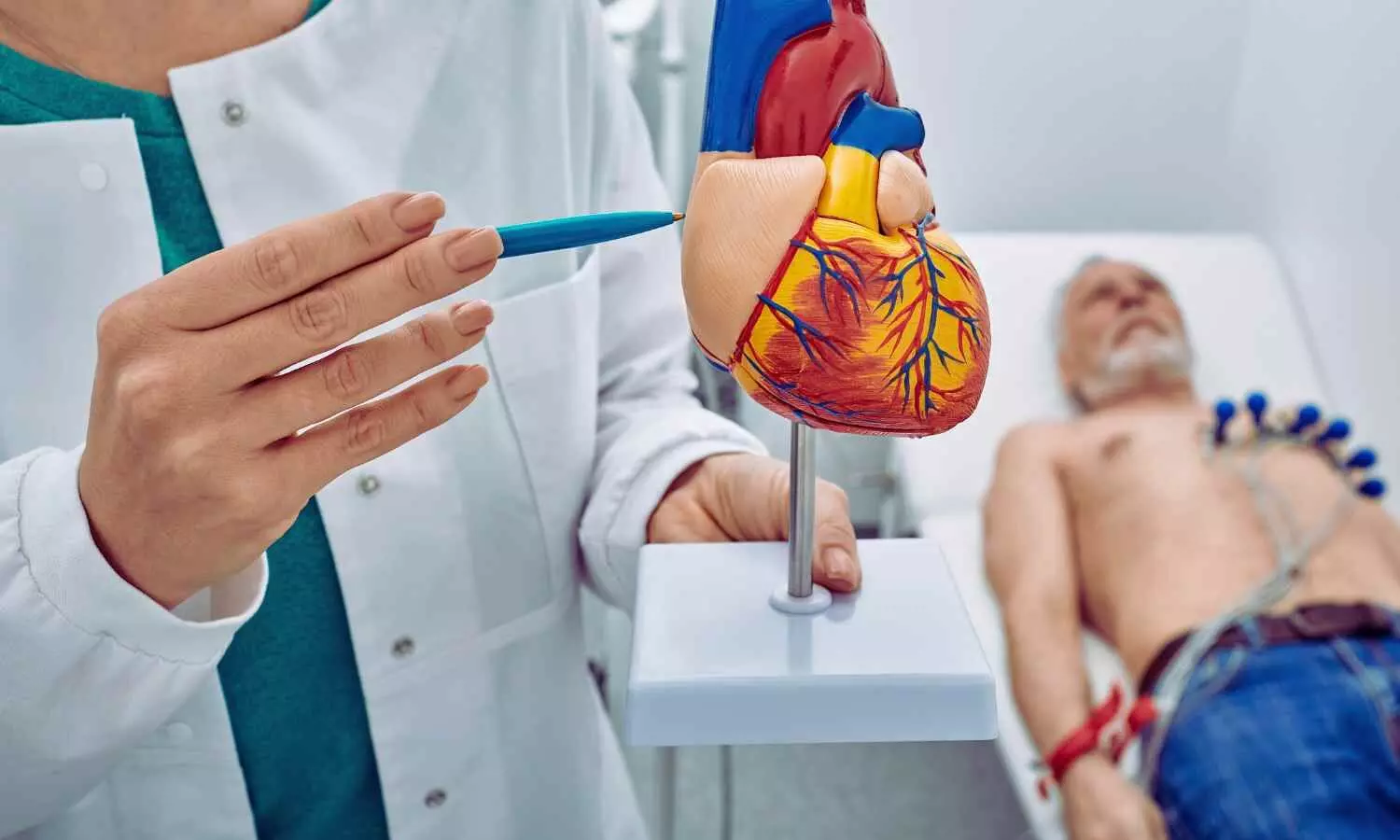Scar tissue in athletes’ hearts tied to higher risk of dangerous cardiac rhythms, reports study
- byDoctor News Daily Team
- 23 October, 2025
- 0 Comments
- 0 Mins

Scar tissue in the heart was associated with abnormal heart rhythms among healthy, long-time male endurance athletes age 50 or older, potentially increasing their risk ofsudden cardiac death, according to a small study published today inCirculation: Cardiovascular Imaging, an American Heart Association journal. An irregular rhythm originating from a ventricular heart chamber, calledventricular tachycardia, is considered one of the most serious types of abnormal heart rhythm. It is extremely dangerous and can lead to sudden cardiac death. Sudden cardiac arrest is a leading cause of death in athletes, mostly affecting older men. Myocardial fibrosis-the scarring or thickening of heart muscle tissue-has previously been linked to irregular heartbeats; however, how it affects otherwise healthy endurance athletes remains unclear. “Dangerous heart rhythms during sport are thankfully rare,” said senior study author Peter Swoboda, M.B.B.S., Ph.D., an associate professor of cardiology at the University of Leeds in the U.K. “In certain highly trained athletes-particularly as they get older-it is possible to identify scarred heart tissue via magnetic resonance imaging. We wanted to investigate whether dangerous heart rhythms in endurance athletes might be caused by heart scarring. “Our main aim was to help endurance athletes continue to participate safely in sports, particularly as they get older,” he said. The study called VENTOUX was named after a famous mountain climb in the world-renowned Tour de France bike race. The researchers followed 106 male cyclists/triathletes aged 50 or older, who had no symptoms of heart disease. All had trained at least 10 hours a week for 15 years or more. The participants underwent cardiovascular magnetic resonance (CMR) imaging, a specialized test that uses magnetic fields to produce detailed images of the heart. They also had an ECG recorder implanted under the skin of their chest that recorded every heartbeat for two years. During an average follow-up of two years, researchers found: Any participant who developed a potentially harmful rhythm was contacted urgently to assess symptoms and advised to seek independent medical attention. “We did not expect the association between scarring and dangerous rhythms to be this strong,” Swoboda said. “Similar findings have been reported in patients with heart muscle disease, however, we did not expect this in healthy, performance athletes.” He urged any athlete who experiences chest pain, dizziness or palpitations during activity to seek treatment and also advised, “It’s important that everyone involved in sports knows CPR and how to use an automated external defibrillator.” Although the annual incidence of sudden cardiac death during sports varies among studies, the annual rate of abnormal heart rhythms detected in this study were considerably higher than rates among the general population. The study has several limitations such as including a small number of very select participants. The findings may not apply to people not represented in the study: women, non-athletes or non-European cyclists. In addition, the findings could not differentiate whether the cardiac scarring itself was the cause of irregular heart rhythms or if it was a marker for a separate underlying process. Future research will examine women, the authors said. Study details, background and design: Wasim Javed, Ioannis Botis, Ventricular Arrhythmia and Cardiac Fibrosis in Endurance Experienced Athletes (VENTOUX), Circulation Cardiovascular Imaging, https://doi.org/10.1161/CIRCIMAGING.125.018470
Disclaimer: This website is designed for healthcare professionals and serves solely for informational purposes.
The content provided should not be interpreted as medical advice, diagnosis, treatment recommendations, prescriptions, or endorsements of specific medical practices. It is not a replacement for professional medical consultation or the expertise of a licensed healthcare provider.
Given the ever-evolving nature of medical science, we strive to keep our information accurate and up to date. However, we do not guarantee the completeness or accuracy of the content.
If you come across any inconsistencies, please reach out to us at
admin@doctornewsdaily.com.
We do not support or endorse medical opinions, treatments, or recommendations that contradict the advice of qualified healthcare professionals.
By using this website, you agree to our
Terms of Use,
Privacy Policy, and
Advertisement Policy.
For further details, please review our
Full Disclaimer.
Recent News
Health Ministry Proposes Barcoding Rule for All Va...
- 23 October, 2025
Boehringer Ingelheim Jascayd gets nod in China for...
- 23 October, 2025
Mizoram reports 121 multidrug-resistant TB Deaths...
- 23 October, 2025
GSK Shingrix new prefilled syringe presentation ge...
- 23 October, 2025
Daily Newsletter
Get all the top stories from Blogs to keep track.


0 Comments
Post a comment
No comments yet. Be the first to comment!